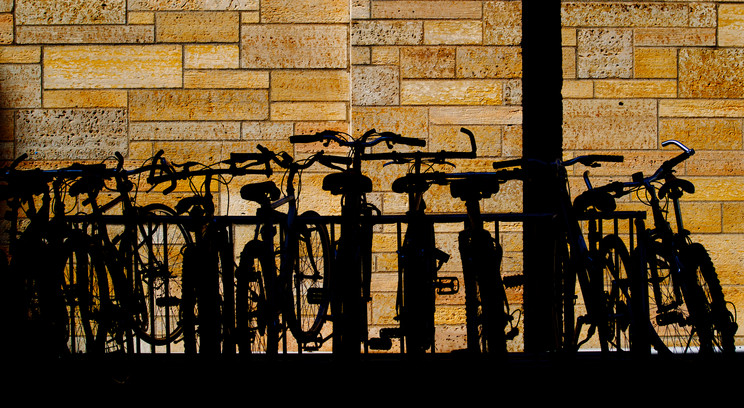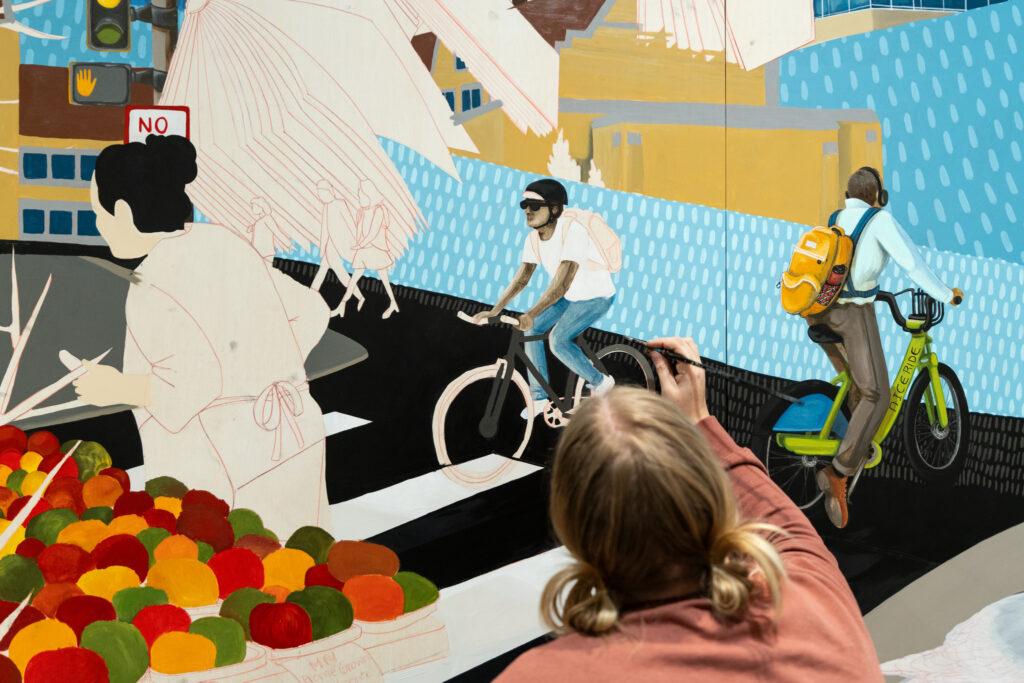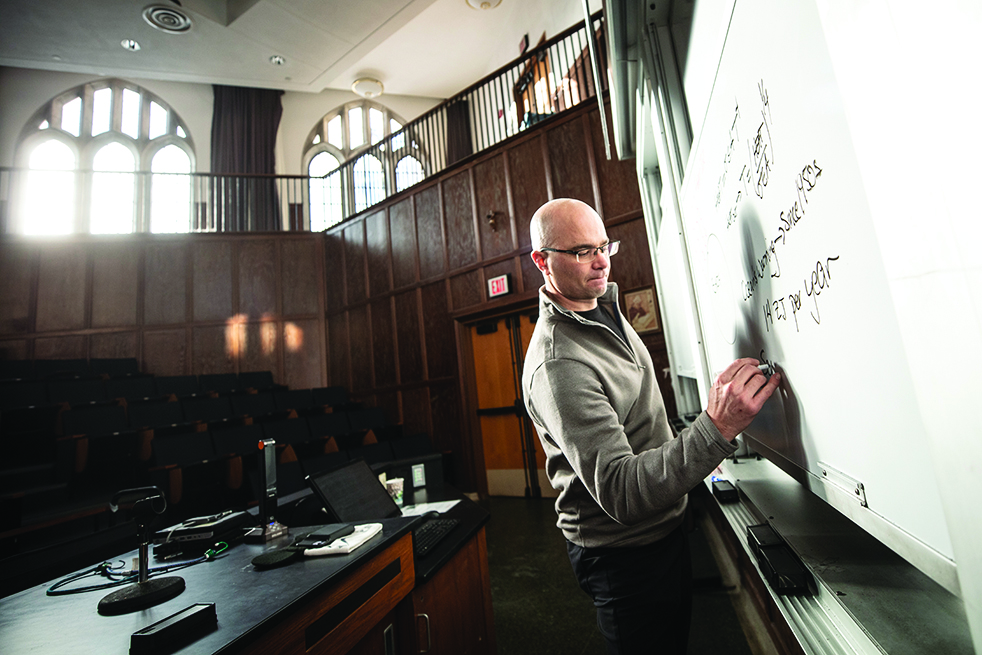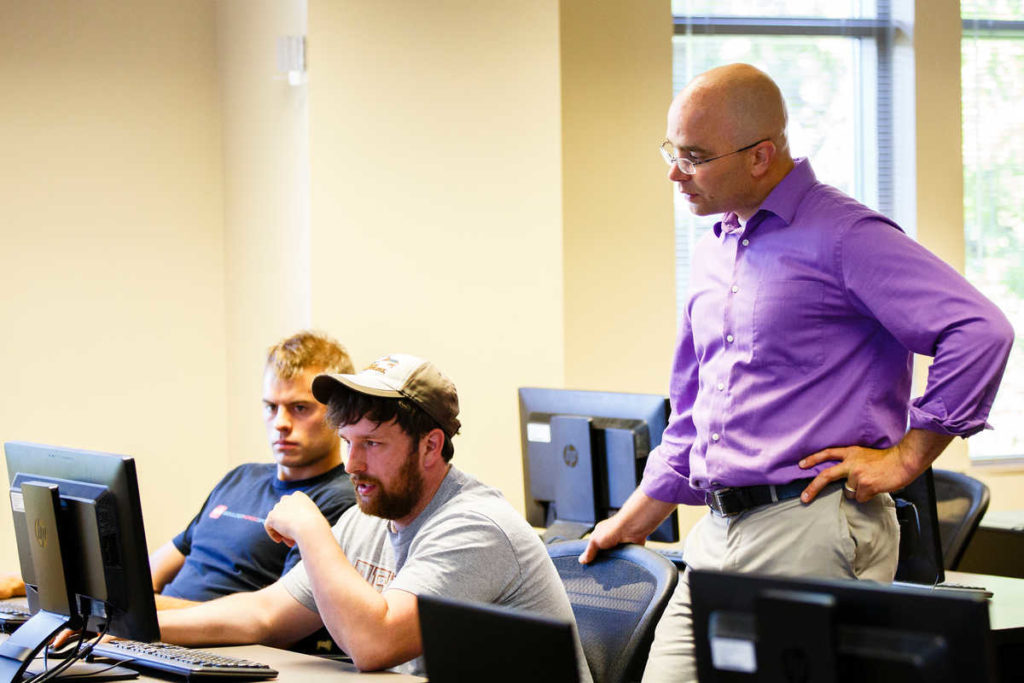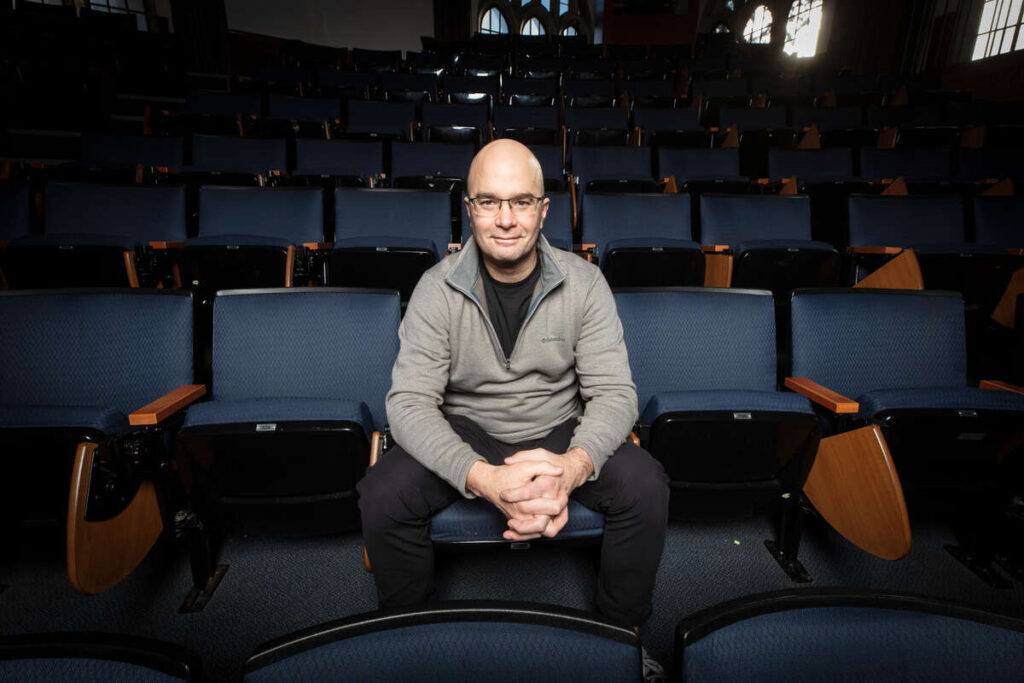An article in Inside Higher Ed titled Shifting Gears, highlights the shift among higher educational institutions to promote more bicycle-pedestrian (bike-ped) transportation courses and research on campus. The article acknowledges that this promotion exists because there has been an increase in popularity of users of this form of transportation, those users are not just current university students (graduate and undergraduate), but also faculty and staff who are choosing to make this form of transportation, the primary method they use to get to and around campus. The University of St. Thomas provides great resources and options , for those wishing to bike to and from campus.
The increase in popularity has many thinking that additional courses on campus as well as possible majors focused on bike transportation would be needed in the future. Academic scholars today are choosing to not just focus on the health benefits of biking, but to examine the sociological and anthropological aspects of this form of transportation. Biking has been a part of the American culture for years, but has taken a backseat to the automobile. More recently it has started to re-gain enthusiasm in many cities as a preferred method of getting around town.
The increase in popularity with bike-ped transportation relates well to aspects of the New Urbanism concept, a concept that I studied in one of the real estate courses during my time in the Full-time UST MBA program. Bike use impacts both cities and towns, by not only allowing residents to be healthier, but helps to increase connectivity in an affordable and good for the environment way.
According to the New Urbanism website, this concept can be defined as promoting the creation and restoration of diverse, walkable, compact, vibrant, mixed-use communities composed of the same components as conventional development, but assembled in a more integrated fashion, in the form of complete communities. There are many elements that contribute to the successful implementation of a new urbanist community, and biking is just one of the many elements. The New Urbanism website talks specifically about the impact that bicycles have on an area and highlights that this is one form of transportation that helps to make lives healthier, reduces congestion and is safe and less costly. The website continues to mention that “bicycles are the most sustainable form of transport, are the least expensive to use, are pollution-free, take up the smallest amount of space for riding and parking, and provide daily exercise for riders. Towns and cities have to be made bicycle-friendly to encourage their wide use.”
Given this new urbanism definition about bicycle transportation, I decided to look at two U.S. cities, close to home, that I believe are making strides towards this effort to become more bike-friendly, Minneapolis and Chicago. My belief is that if cities continue to make strides in this area, this will lead to greater acceptance of and curiosity towards academic curriculum and research focused on this mode of transportation. The Shifting Gears article mentions that bike-ped transportation is currently included in curriculum on many campuses, but usually as part of a broader array of courses on planning and design. Future courses would provide more emphasis on the importance and benefits of bike-ped transportation. I outline below a small sampling of what Minneapolis and Chicago have done to make their cities more bike-ped friendly.
Minneapolis
According to the City of Minneapolis website, “Minneapolis has been ranked as the best biking city in the country by Bike Score, the #2 biking city by Bicycling Magazine, and the #4 bicycling city in the nation by the US Census Bureau. In addition to the high ratings in nationwide publications, the city of Minneapolis has 81 miles of on-street bikeways and 85 miles of off-street bikeway.” Having been a resident of Minneapolis my entire life, I would agree that most residents feel that Minneapolis is a great place to feel welcome if you want to or need to navigate around the city on bike. The opportunity to navigate around the city on bike has greatly increased with the recent addition of the Nice Ride Minnesota program. The program allows residents and visitors to rent bicycles at various locations stationed throughout the city to travel, run errands or navigate their way around. It is a great way to learn your way around the city while staying fit at the same time!
Chicago
Chicago’s effort to become more bike-friendly is part of its overall Bike 2015 Plan. Since 2002, Chicago has been creating and adding more on-street bike lanes and routes that make navigating through the city on bike fun and safe. According to Street for Cycling, by 2020, the goal for the Chicago area will be a network that consists of 645 miles of on-street bike routes. These routes include Neighborhood Bike Routes, Crosstown Bike Routes and Spoke Routes. Similar to Minneapolis, Chicago is in the planning stages of a bike share program that is set to launch in the spring of 2013. The program will grow to 400 stations and about 4,000 bikes throughout the city and will be used in the same way that Minneapolis residents use the Nice Ride Minnesota system. It will be another transportation addition to the city that will make accessing the city easier.
Both cities are making strides towards creating bike-friendly options for residents and visitors. These steps alone will not satisfy new urbanist design principles, but help to provide an opportunity to begin the promoting a healthier, well-connected city.
